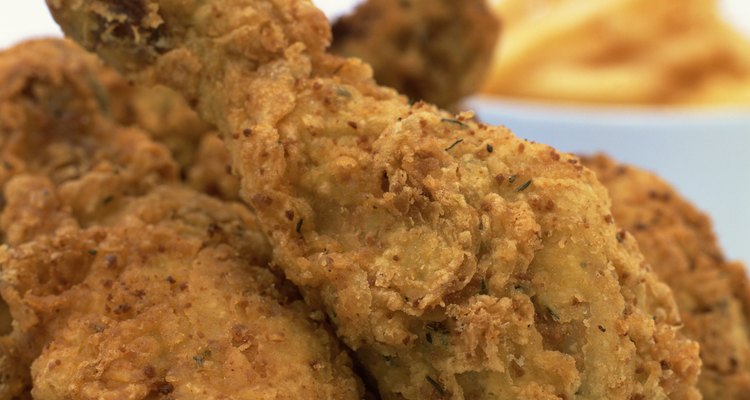
When making fried chicken, the quantities you need of staples like milk, eggs and flour depend largely on your cooking method. You should consider three key points: Whether you will be tenderizing the chicken in a marinade before frying, what kind of coating the chicken will have, and whether you'll be serving the chicken with gravy. A standard recipe will call for a whole chicken, or eight to 10 pieces, but it's helpful to double-check the size or number of chickens used.
Milky Musings
Potentially, you may use milk or buttermilk in three different stages of frying chicken. A traditional buttermilk-fried chicken with gravy, for example, requires 3 cups of buttermilk for the marinade, and 2 cups whole milk for the gravy. Because the chicken retains moisture from the marinade, you don't dip it in milk before dredging it in flour. For a quicker version in which you dredge the chicken pieces first in a milk and egg mixture, then in flour, you'll only need 1 cup buttermilk or whole milk.
Eggy Estimates
Unlike milk, which can be used in up to three stages of cooking fried chicken, eggs only figure -- sometimes -- in the coating stage. In general, a recipe in which you dredge your chicken in an egg and milk mixture will call for one to two eggs -- a thick batter for deep-frying will likely have two eggs. If you are following a recipe that has no whole milk or egg yolks, you'll need about four eggs to make a dip from egg whites. Some traditional Southern fried chicken recipes use no egg or milk, only flour.
Floury Forecast
How much flour you'll need in for fried chicken is based on how thick the coating or batter is, as well as if you'll be serving it with gravy. A basic dredging of eight to 10 chicken pieces can take anywhere from 1 to 3 cups of flour to ensure even coating, especially if you are using the "double dip" method before frying. For the optional gravy that some people serve with fried chicken, you need about 2 tablespoons of flour to thicken the gravy.
Surprising Substitutions
Whether because you want to spice things up or because you're following long-standing regional traditions, you may include other elements or your recipe may call for them. Double-check the ingredients list to make sure the dredging milk isn't evaporated milk or buttermilk. Similarly, breadcrumbs, matzo meal or cornmeal may step in for some or all of the white flour. Finally, some coatings use an egg substitute product rather than whole eggs.
Related Articles
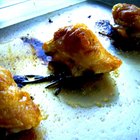
How to Cook Chicken Thighs

How to Bake Frozen and Pre-Breaded ...
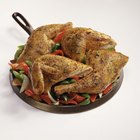
How to Cook Nelson's Port-A-Pit Chicken

How to Make Chicken Just Like the KFC ...
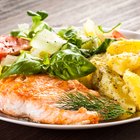
How to Cook a Turbot Fillet

How to Prepare Breaded Pork Cutlets ...

Calories of Egg Whites Vs. Whole Eggs

Substitute for Gram or Besan Flour
How to Cook Tilapia Fillets Using an ...

What Can I Substitute for Cake Flour to ...
Quick and Easy Chicken Parmesan Recipe
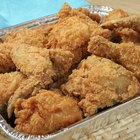
How to Cook Drumsticks With Bread ...

How to Fry Shrimp With Potato Starch
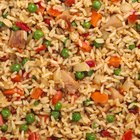
How to Cook Arroz Chaufa
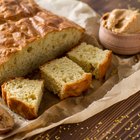
How Many Calories Are in Jiffy ...
Can You Use a Baking Mix to Make Fried ...
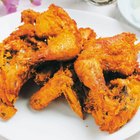
How to Coat Chicken for Frying Without ...

How to Make Chinese Chicken in a Slow ...

The History of Chicken & Dumplings

How to Bake Chicken Breast Without Oil
References
Writer Bio
Ellen Douglas has written on food, gardening, education and the arts since 1992. Douglas has worked as a staff reporter for the Lakeville Journal newspaper group. Previously, she served as a communication specialist in the nonprofit field. She received her Bachelor of Arts from the University of Connecticut.
Photo Credits
ITStock Free/Polka Dot/Getty Images